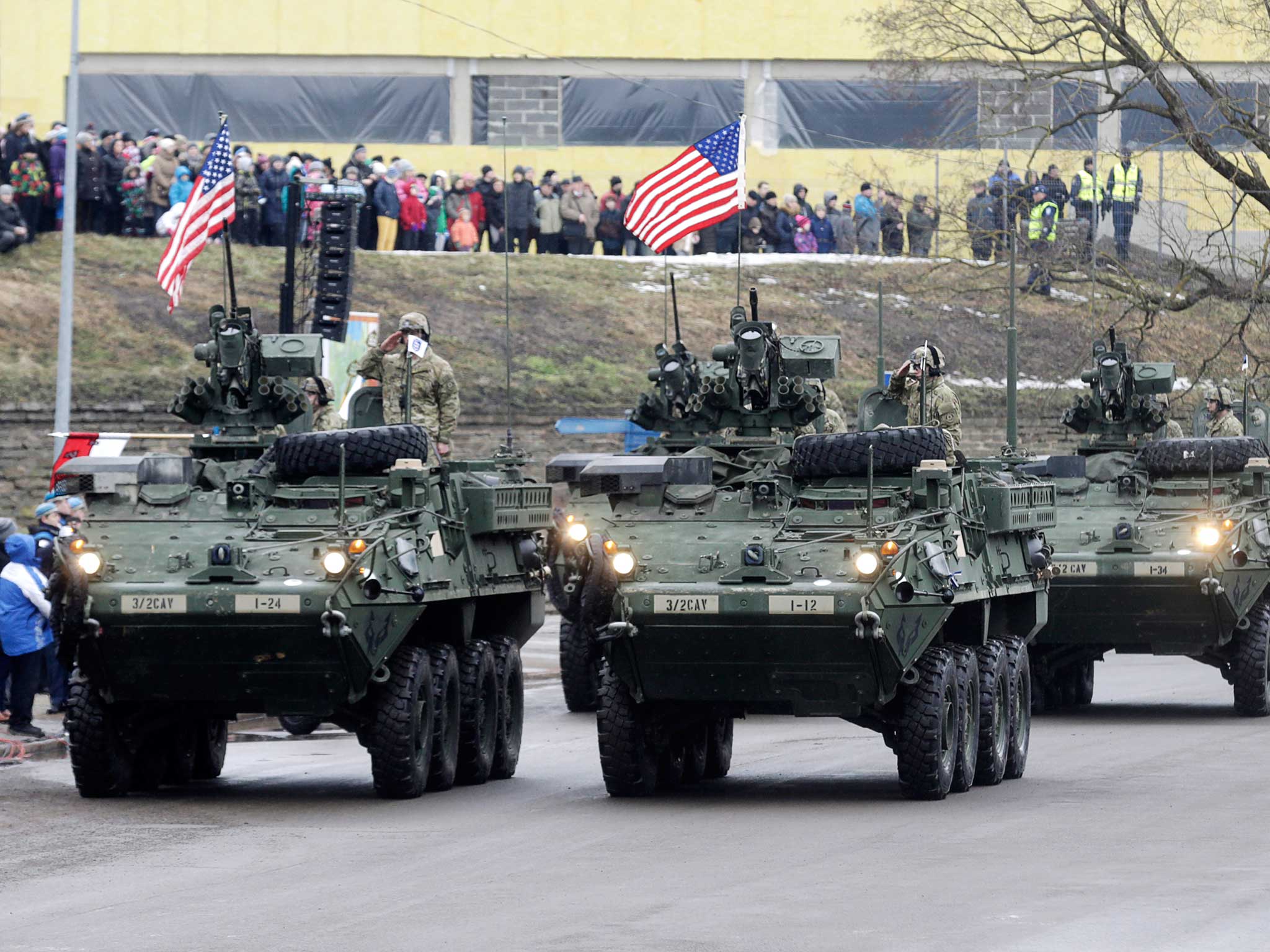British and US troops parade 300 yards from Russian border in show of Western unity
Parade came shortly after UK's defence secretary claimed there was a 'real and present danger' to the Baltic state from Russia

Your support helps us to tell the story
From reproductive rights to climate change to Big Tech, The Independent is on the ground when the story is developing. Whether it's investigating the financials of Elon Musk's pro-Trump PAC or producing our latest documentary, 'The A Word', which shines a light on the American women fighting for reproductive rights, we know how important it is to parse out the facts from the messaging.
At such a critical moment in US history, we need reporters on the ground. Your donation allows us to keep sending journalists to speak to both sides of the story.
The Independent is trusted by Americans across the entire political spectrum. And unlike many other quality news outlets, we choose not to lock Americans out of our reporting and analysis with paywalls. We believe quality journalism should be available to everyone, paid for by those who can afford it.
Your support makes all the difference.British and American soldiers paraded through the streets of an eastern Estonian town yesterday in a show of Western unity just 300 yards from the Russian border.
The parade, featuring the US Army’s Second Cavalry Regiment alongside British and Estonian troops, officially marked Estonia’s Independence Day - but the choice of location in the Estonia-Russian border city of Narva is highly symbolic, especially given Michael Fallon's remarks today confirming the deployment of 75 British military trainers to Ukraine.
Earlier today the Defence Secretary said that the UK should "come to the aid of a friend in need," but emphasised that the government would not deploy combat troops to Ukraine. Mr Fallon also said the deployment was a British initiative, separate from any action by Nato.
Narva, a vulnerable Estonian border town located on the eastern tip of the country, has been cited as a potential target for the Kremlin should it wish to escalate its aggressive stance towards the West.
The parade, in a city where the majority of the 60,000 residents are ethnically Russian, comes amid rising Western fears over the Kremlin’s meddling in the Ukrainian war.
Mr Fallon's remarks follow on from last week, when he claimed there was a “real and present danger” to Latvia, Lithuania and Estonia with the rise of Russian belligerence.
Kiev alleges that pro-Russian rebels to the east are funded and backed by the Kremlin, a charge strongly denied by Russia.
Despite an agreed ceasefire between pro-Russian rebels and the Ukrainian government on 12 February, pockets of resistance have continued in the country as both sides claim violations by the other.
More than 5,400 people are thought to have been killed in the bitter conflict.
"The events in Ukraine that have kept the entire world awake, demonstrate very clearly that we ourselves must maintain security," Estonia's chief of staff General Riho Teras said at the parade.
"History has taught us that if we do not defend ourselves, nobody else will," General Teras told the Daily Telegraph.
Estonia, which joined Nato in 2004 along with Latvia and Lithuania, currently has compulsory military service for eight or 11 months from the age of 18.
Lithuania president recent reinstated military conscription – discontinued in 2008 – citing growing concerns of Russian assertiveness in the Baltic region.
Troops in the parade, which also consisted of roughly 100 Spanish, Dutch, Lithuanian and Latvian soldiers alongside British and US forces, may form part of Nato's planned expansion.
Earlier this month, Nato’s general secretary announced the decision to set up six new command posts on its eastern borders, and create a 5,000 strong rapid response force.
Join our commenting forum
Join thought-provoking conversations, follow other Independent readers and see their replies
Comments